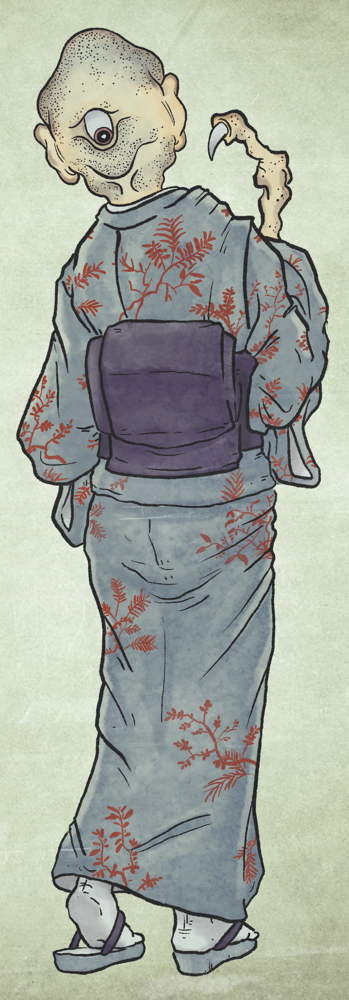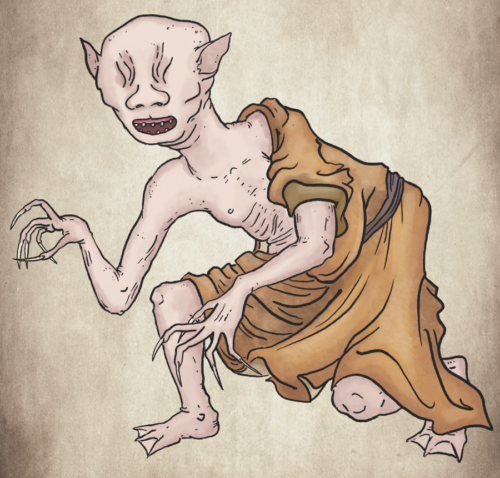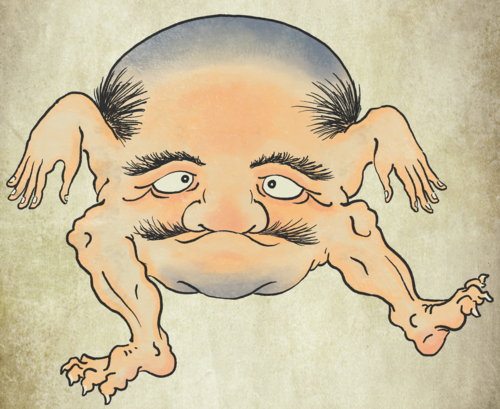Remember back in elementary school when your teacher used to say that she had eyes in the back of her head? Well, you might not be surprised by this, but there’s a yokai for that!

Ushirome
Ushirome
eye in the back
Ushirome originates in the Matsui Bunko Hyakki yagyo emaki. As such, it is another mysterious yokai with no origin story. But we can extrapolate a bit based on its name and its depiction.
Quite literally, ushirome has an eye right smack in the back of its head. It wears a women’s kimono, and has the shaved bald head of a Buddhist monk. It appears not to have hands, but instead it has arms that end in single, hooked talons.
The original illustration only shows ushirome from the shoulders up, and only one of its arms. However, because it’s wearing a kimono I think it’s safe to assume it has more than one arm. It may be a one-legged yokai, but if that were the case its one leg would probably have been painted, so it’s probably safe to assume it has two legs as well.
So why does ushirome have only one eye, and what does ushirome mean besides having an eye in the back of your head?
Ushiro no me (eyes in the back) is a Japanese idiom which is similar in meaning to the English idea. It means that you’re not able to hide something or keep something secret because eventually it will be discovered. Other bits of wordplay have been suggested: the creature is pointing its large single finger backwards, which hints at the Japanese idiom ushiro yubi wo sasu (pointing a finger at someone’s back; meaning to say bad things about someone when they’re not around). Ushiro wo miseru (to show one’s back) is another idiom that is brought to mind. It implies cowardice and running away.
The Hyakumonogatari bakemono emaki (painted in 1780) includes a copy of this yokai, but renames it oyanirami (“parents’ glare”) and a later version which is in the collection of Kyoto’s International Research Center for Japanese Studies is titled oyashirome (the whites of parents’ eyes).
The early Edo Period book Ikoku monogatari (Tales from Foreign Countries) speaks of a faraway land called Kogankoku (“the land of back-eyed people”) inhabited entirely by people with single eyes in the backs of their heads. The people of Kogankoku were archers, and resembled the Tatars of Central Asia. There’s no strictly expressed connection between those people and this yokai, but it’s hard to ignore the very obvious similarity as well.
The kanji used to write ushirome can also be read shirime, which is the name of another ahem famous yokai. Perhaps there is some kind of relation between the two? Or perhaps one of them is a wordplay on the other?
There are plenty of other mysteries about this yokai. Are there other idioms that it evokes which we have skipped over? Is there a meaning to the kimono and even the design on the kimono which it is wearing? Does it have eyes on the front of its face as well? We’ll never know, but there sure is a lot to speculate about this grotesque-looking character!
Want more yokai? Visit yokai.com and check out my yokai encyclopedias on amazon.com! Still want more? You can sign up for my Patreon project to support my yokai work, get original yokai postcards and prints, and even make requests for which yokai I paint next!







